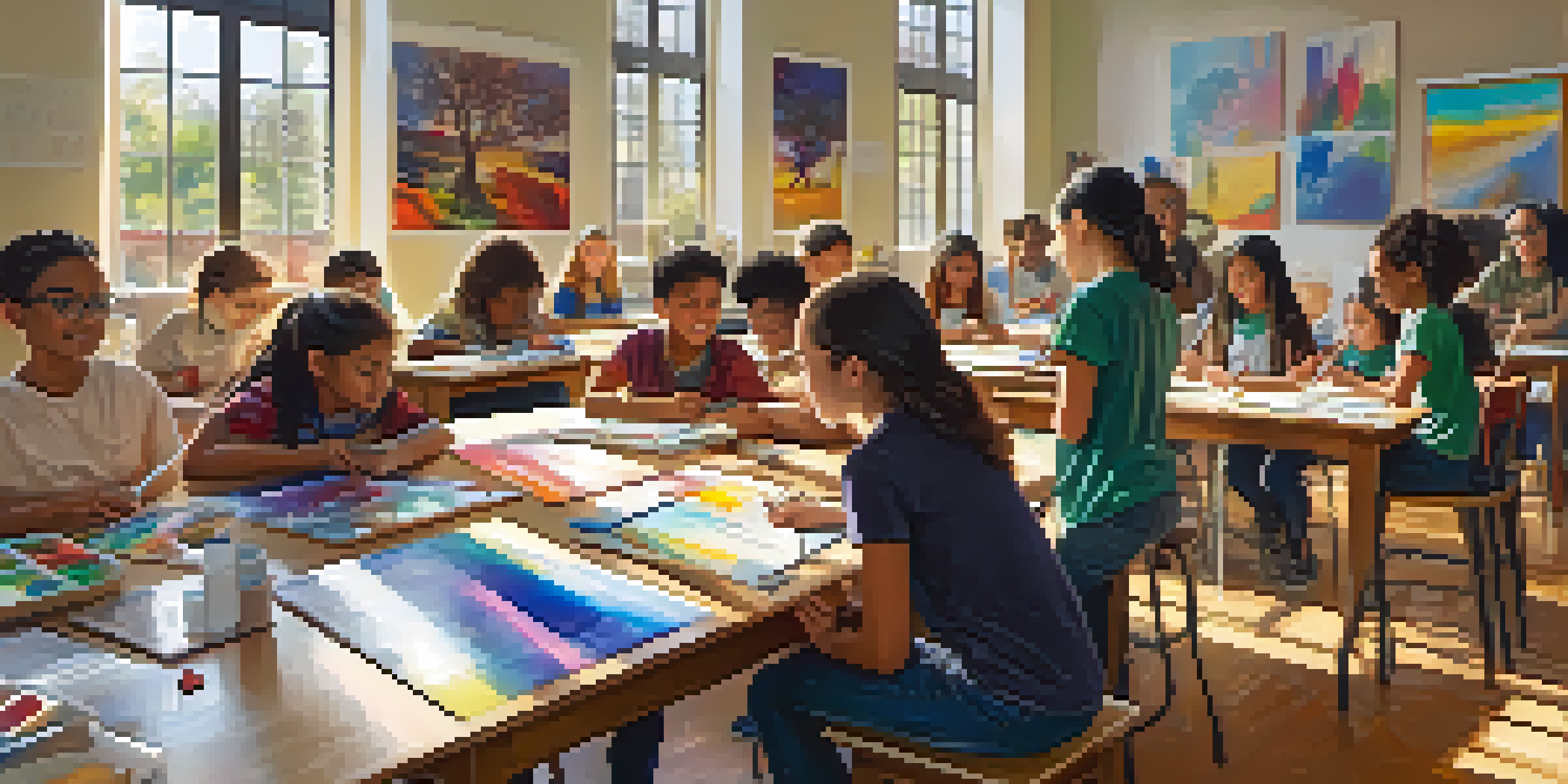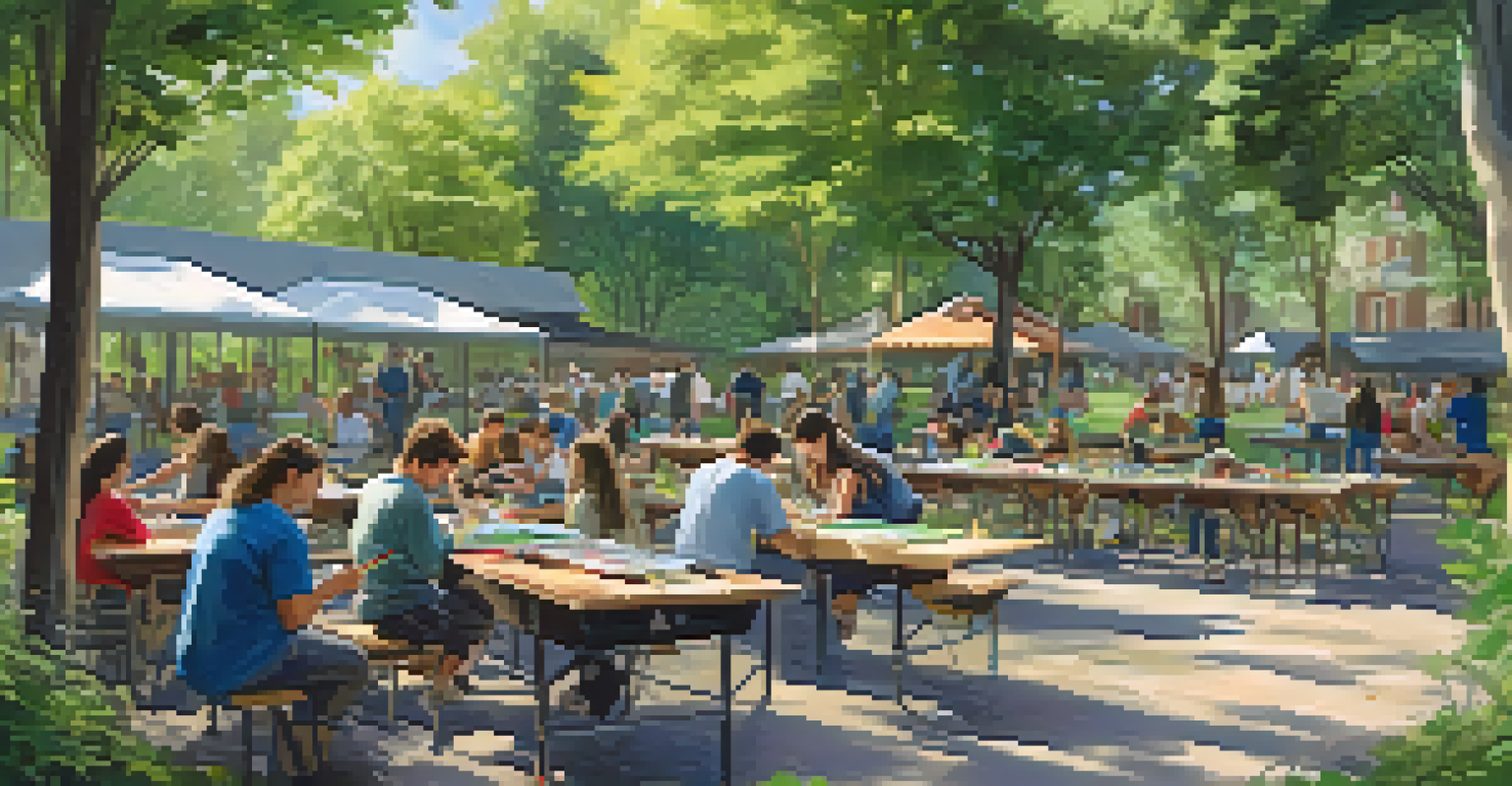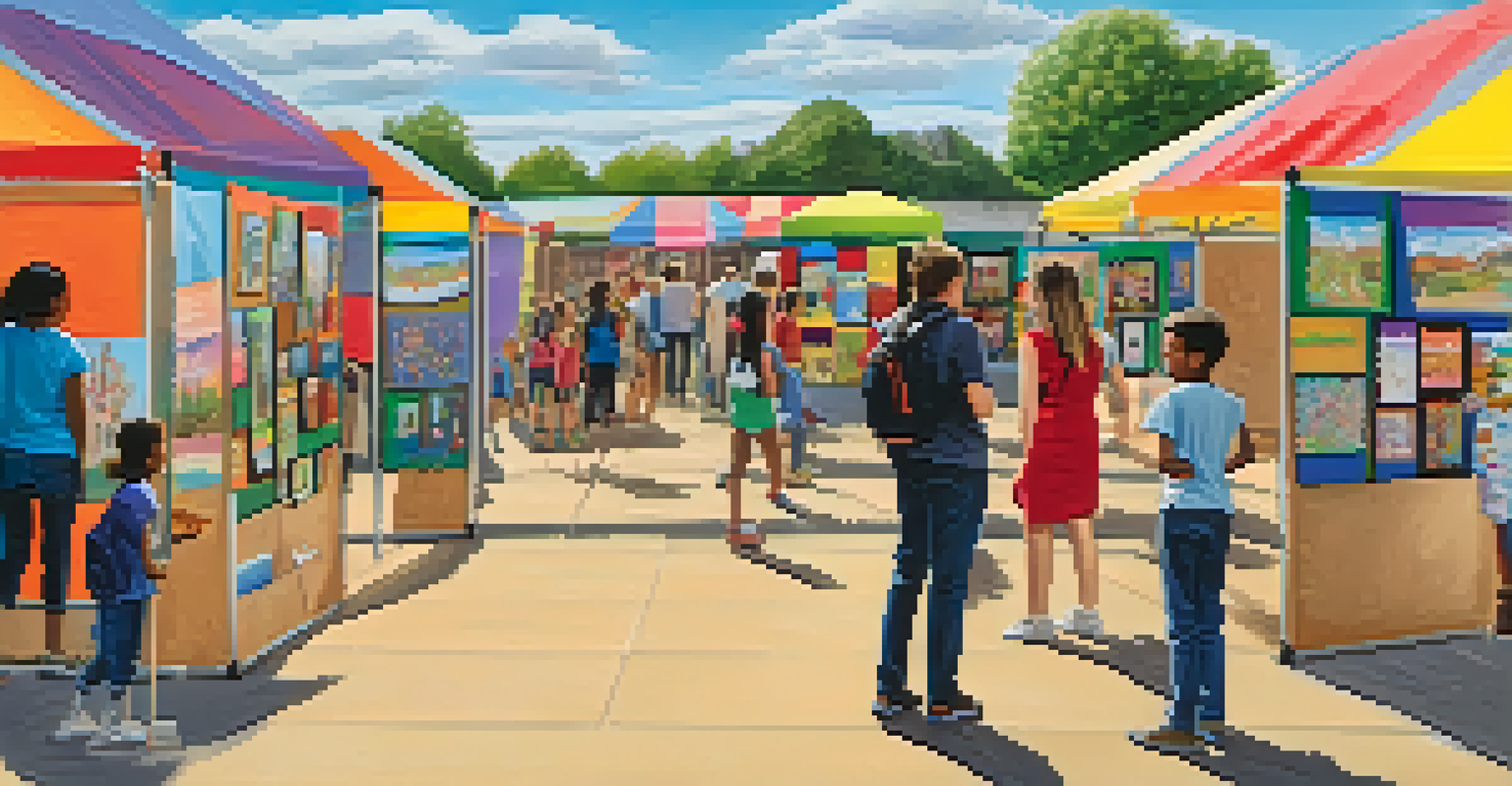Integrating Arts into Colorado's Core Curriculum Effectively

Understanding the Importance of Arts Education
Arts education is vital for fostering creativity, critical thinking, and emotional intelligence in students. By integrating arts into Colorado's core curriculum, we recognize that learning is not just about rote memorization but also about inspiring innovative thinkers. When students engage with the arts, they develop skills that are applicable across all subjects and in real-world situations.
The arts are not a luxury, but a necessity for education and for life.
Consider a student who struggles with math but excels in drawing. By incorporating visual arts into math lessons, teachers can help that student visualize complex problems, making the concepts easier to grasp. This connection between subjects demonstrates that arts can enhance understanding and retention of information in various disciplines.
Furthermore, arts education promotes inclusivity and cultural awareness, allowing students to express themselves and learn about diverse perspectives. This holistic approach to education prepares students not just academically, but also as empathetic individuals ready to contribute positively to society.
Aligning Arts with Academic Standards
Integrating arts into the core curriculum requires careful alignment with existing academic standards. Colorado's academic standards emphasize critical thinking, collaboration, and creativity, which are also key components of arts education. By mapping out how arts can fulfill these standards, educators can ensure that students receive a balanced and comprehensive education.

For instance, a lesson on storytelling in drama can align with language arts standards by enhancing students' narrative skills. This dual focus not only reinforces academic objectives but also demonstrates to students the interconnectedness of different subjects. When teachers create lessons that serve multiple educational purposes, they maximize learning opportunities.
Arts Boost Creativity and Learning
Integrating arts into education enhances creativity, critical thinking, and emotional intelligence, benefiting students across all subjects.
This strategic alignment also helps in garnering support from stakeholders who may be skeptical about the arts' role in education. By showcasing how arts education meets academic benchmarks, educators can advocate for the necessary resources and time to implement these programs effectively.
Professional Development for Educators
To successfully integrate arts into the curriculum, educators need robust professional development opportunities. Workshops and training sessions can equip teachers with the skills and confidence to incorporate arts into their lesson plans. By fostering an environment of continuous learning, schools can empower educators to explore innovative teaching methods.
Creativity is intelligence having fun.
For example, a workshop focused on creative drama techniques can help teachers understand how to use role-play to enhance student engagement in history lessons. Such experiential learning not only benefits teachers but also translates to more dynamic and interactive classrooms. When educators feel supported in their professional growth, they are more likely to embrace change and experiment with new ideas.
Additionally, collaboration among educators across different disciplines can lead to the development of interdisciplinary projects that incorporate arts. These collaborative efforts can create a sense of community among teachers, fostering a shared commitment to enhancing student learning through the arts.
Creating an Inclusive Arts Curriculum
An effective arts curriculum should reflect the diversity of Colorado's student population. Inclusivity in arts education means recognizing and valuing different cultural backgrounds, learning styles, and abilities. This approach not only enriches the learning experience but also fosters a sense of belonging among all students.
For instance, incorporating various cultural art forms—such as Native American storytelling or Hispanic dance—into the curriculum can provide students with a broader understanding of their peers' experiences. This not only promotes respect and appreciation for diversity but also encourages students to share their own cultural narratives, enriching classroom discussions.
Professional Development is Key
Robust professional development for educators empowers them to effectively incorporate arts into their teaching, leading to more engaging classrooms.
Moreover, an inclusive arts curriculum can address the needs of students with different learning abilities. Differentiating instruction through various artistic mediums allows all students to engage meaningfully, making arts education accessible to everyone.
Utilizing Community Resources and Partnerships
Leveraging local community resources can significantly enhance arts integration in schools. Partnerships with local artists, cultural organizations, and art institutions can provide students with unique learning experiences outside the classroom. Community involvement not only enriches the curriculum but also fosters connections between students and their broader environment.
For example, a partnership with a local theater company can lead to workshops where students learn the fundamentals of acting and production. Such hands-on experiences can ignite a passion for the arts while also allowing students to build relationships with professionals in the field. These interactions can inspire students and provide them with valuable insights into potential career paths.
Additionally, community resources can offer schools access to materials, funding, and expertise that might otherwise be unavailable. By tapping into these resources, schools can create a more vibrant and engaging arts program that benefits all students.
Assessment Strategies for Arts Integration
Assessing student learning in arts-integrated curricula can be challenging, yet it is essential for measuring effectiveness. Traditional assessment methods may not adequately capture the creativity and innovation that arts education fosters. Therefore, developing alternative assessment strategies that reflect students' artistic growth and understanding is crucial.
For instance, using portfolios to showcase students' work over time allows for a more comprehensive evaluation of their progress. Portfolios can include written reflections, project documentation, and recordings of performances, providing a holistic view of student learning. This method encourages self-assessment and critical thinking, as students learn to evaluate their own work and set personal goals.
Community Partnerships Enhance Arts
Leveraging local community resources and partnerships enriches arts education, providing students with unique learning experiences and connections.
Additionally, incorporating peer assessments can foster collaboration and communication skills, essential components of both arts and core subjects. By creating a culture of feedback and reflection, students can develop a deeper understanding of their learning journey and the value of their artistic contributions.
Promoting Arts Advocacy within Schools
Advocating for the arts within schools is essential to ensure their integration into the core curriculum. Educators, parents, and community members must work together to emphasize the value of arts education in holistic student development. Advocacy efforts can help secure funding, resources, and support for arts programs.
Organizing events such as arts fairs, performances, and exhibitions can showcase students' artistic talents and highlight the importance of arts education. These events not only celebrate student achievements but also engage the community and foster a shared appreciation for the arts. When stakeholders see the impact of arts education firsthand, they are more likely to support its continued presence in schools.

Moreover, creating a dedicated arts committee within schools can ensure that arts education remains a priority. This committee can advocate for resources, plan events, and facilitate communication between teachers, parents, and community partners, fostering a strong network of support for arts integration.